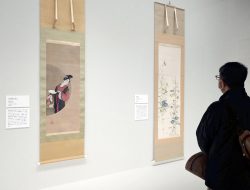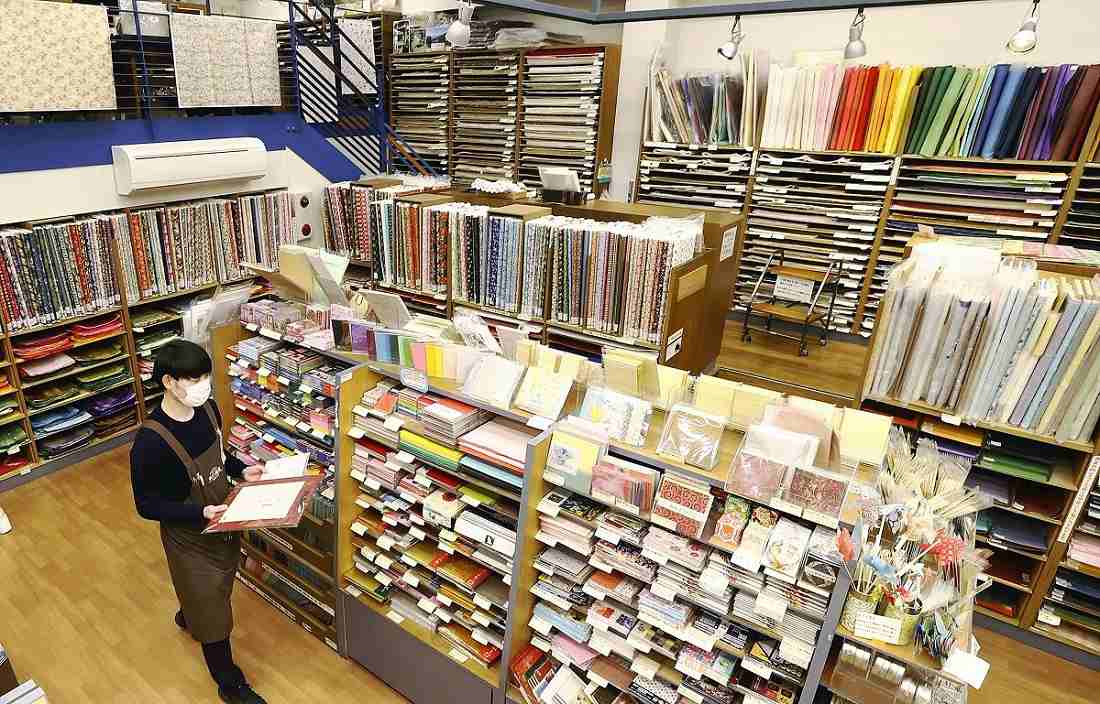
The Kami no Ondo specialty paper store in Atsuta Ward, Nagoya, brims with a wide variety of paper products.
10:40 JST, April 20, 2023
NAGOYA — Kami no Ondo, a specialty paper store in Atsuta Ward, Nagoya, celebrated its 30th anniversary in March. The store, whose name means “paper temperature,” has built a following across the nation among enthusiasts keen to peruse its 20,000 products, including handmade washi paper and rare paper from abroad.
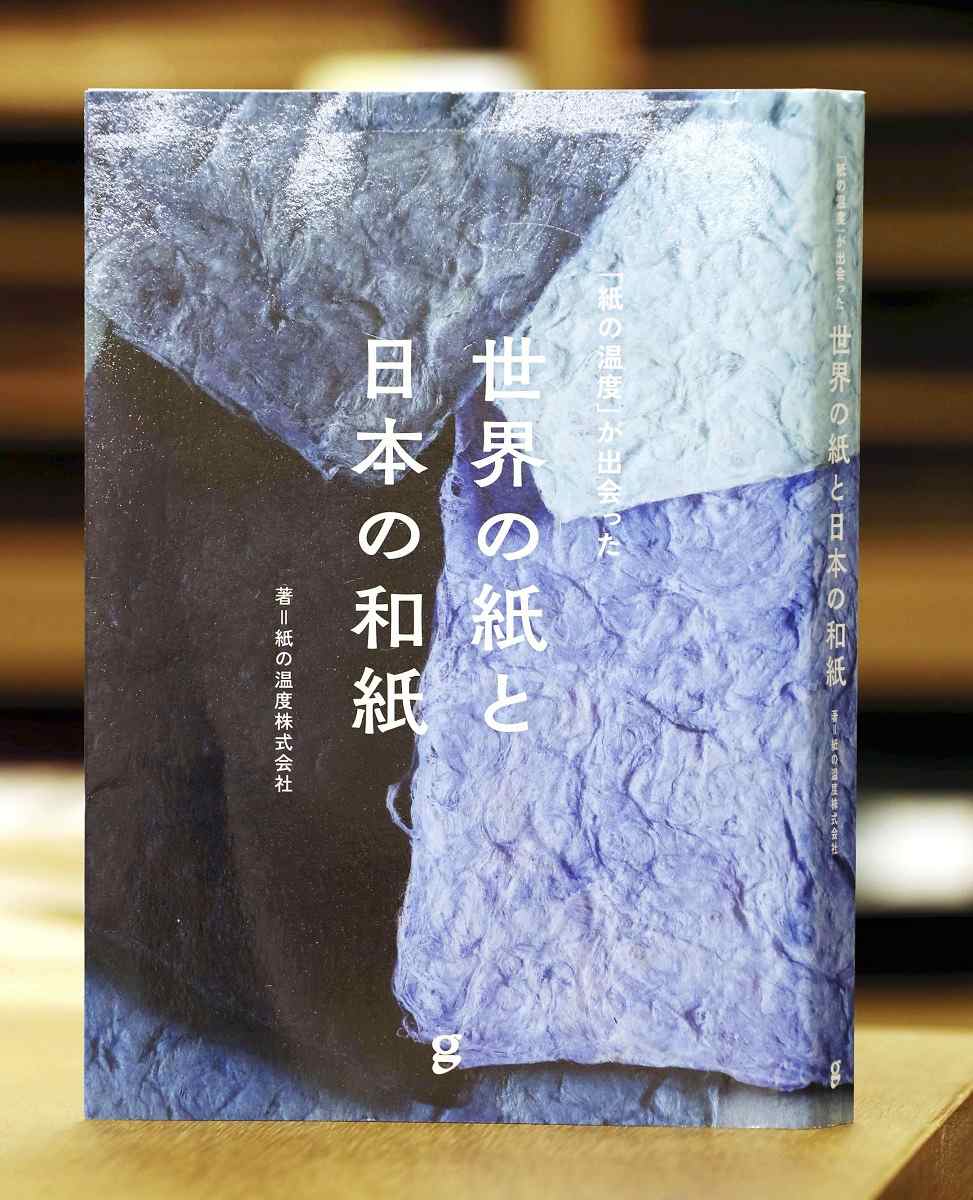
The front cover of a book featuring Kami no Ondo, released by Graphic-sha Publishing Co. last year.
Finding a niche
Upon entering the store — a former warehouse near Atsuta Jingu shrine — customers are confronted with myriad shelves stacked with paper of different colors, designs and textures.
Seiji Hanaoka, the store’s founder and proprietor, is the fourth-generation operator of a paper wholesaler that started business in 1866.
At one point, the company concentrated on household paper products, such as toilet paper. But recognizing the limitations of being stuck between manufacturers and mass retailers, Hanaoka, 80, began searching for a new approach to sustain his business. He was keen to work closely with consumers and find a niche market that large corporations would find difficult to exploit.
After much deliberation, Hanaoka decided to create a business that pivoted around handmade washi paper. He traveled extensively throughout Japan to find unique examples, before launching the store in 1993 at the age of 50. The store’s name was inspired by an employee of the company who visited washi paper production areas and commented on the “warmth” of the handmade goods.
In the early days, he persuaded paper craftspeople to sell their products directly to him, patiently gaining their trust. That enabled Hanaoka to boost the variety of items available at the store.
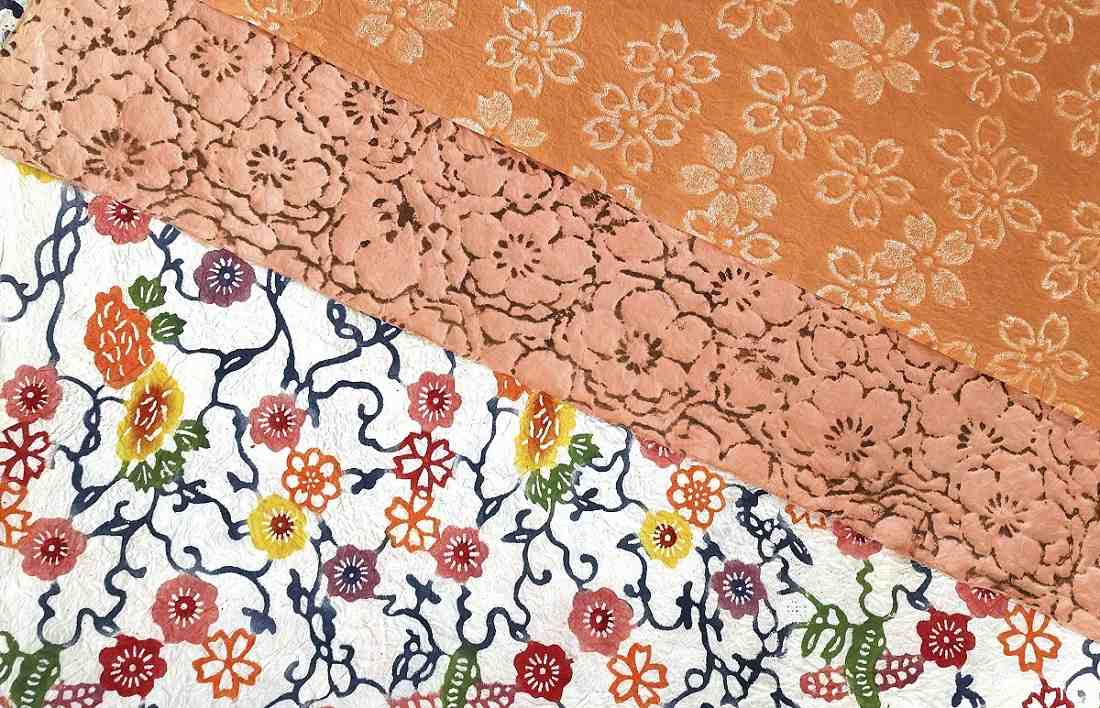
The top two paper sheets are Takuhon-shi embossed paper, which is strengthened with konnyaku glue and made in Shiroishi, Miyagi Prefecture. The bottom is pattern-dyed momigami paper produced in the Kurotani district of Ayabe, Kyoto Prefecture.
Various materials
Typically, washi paper is made using one of three raw materials: kozo mulberry, which is strong and commonly used for calligraphy and shoji paper sliding doors; mitsumata oriental paperbush, which has a smooth surface and is utilized for banknotes; and gampi, which has a delicate texture and is often used in Japanese kana syllabary calligraphy. The store also offers papers made from bamboo and Manchurian wild rice.
Processing imbues different papers with unique features. For example, Momigami, or crumpled washi paper, is strengthened through a wrinkling process, while Rakusuishi features patterns created by drops of water. Takuhon-shi is embossed with woodblock patterns, and paper made using the traditional Okinawan Bingata dyeing technique is pleasing to the eye.
The store also offers various types of handmade items sourced from overseas, such as paper made from the lokta plant that grows in the Nepalese mountains, paper created by an entire village in Bhutan, French paper featuring embedded flowers, and Israeli paper containing old banknote fragments produced by a craftsperson who learned paper-making techniques in Japan.
Customers seek out paper for a variety of uses including calligraphy, restaurant menus, Japanese wagashi sweets “plates,” art college projects and paper doll kimonos. Some come looking for large sheets of foreign paper to create advanced origami works.

Seiji Hanaoka
‘Undiscovered’ papers
Hanaoka notes that some customers spend an entire day looking over items at the store shortly after the Bon Festival period in summer. “They’re likely preparing pieces for the upcoming fall exhibition season,” he said.
Paper producers have been dwindling over the past 30 years. Once certain stocks run out at Hanaoka’s store, it will not be possible to replace them. Nonetheless, some young paper craftspeople have relocated to paper-production areas and begun to engage with handmade paper. Others have bigger dreams of striving to revive the whole industry.
“I value the relationships I have with such people,” Hanaoka said. “I think there are still many types of paper here and there that we don’t know about, both in Japan and abroad.”
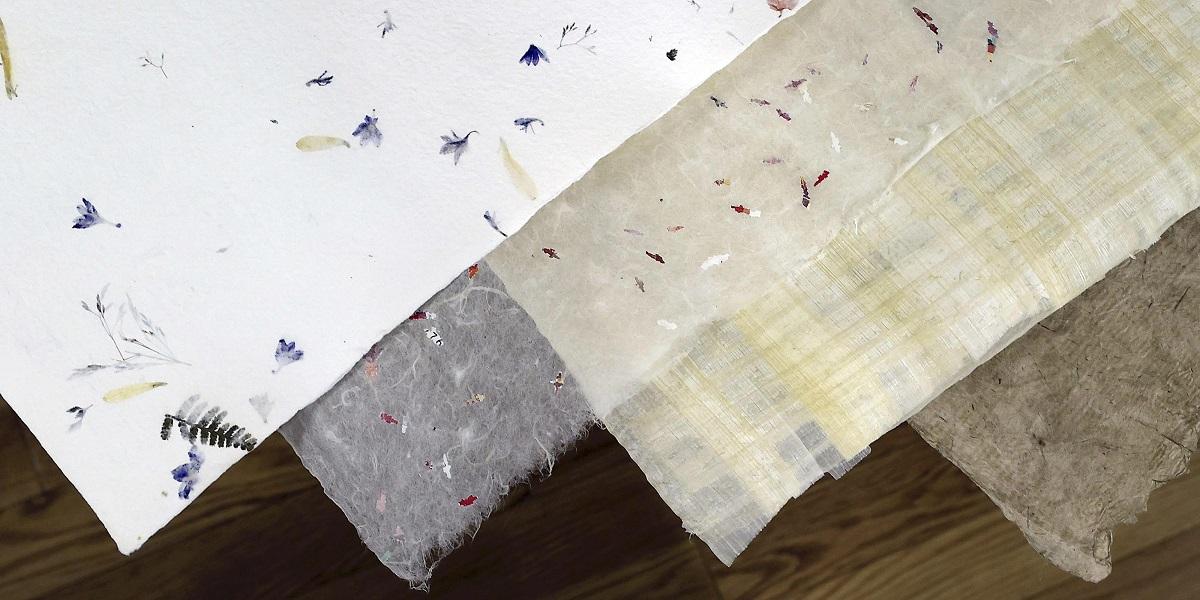
From left to right: French paper embedded with flowers; Israeli paper containing old banknote fragments; Egyptian paper, whose name is said to be the origin of the word “paper;” and paper made by an entire village in Bhutan.
"Culture" POPULAR ARTICLE
-

Van Cleef & Arpels Dazzles with Art Deco Artisanry at Tokyo Exhibit
-

Disney’s ‘Twisted-Wonderland’ Animated Series Puts Villains in Spotlight: New Show Features School Inspired by Classic Disney Films
-

Japan Plans to Distribute Manga Overseas Via New Platform
-

Japanese Craftsman Produces Beautiful and Durable Bags Made of Wood
-

Ayumi Hamasaki’s Shanghai Concert Canceled Day Before Schedule as Part of Beijing Backlash
JN ACCESS RANKING
-

Keidanren Chairman Yoshinobu Tsutsui Visits Kashiwazaki-Kariwa Nuclear Power Plant; Inspects New Emergency Safety System
-

Imports of Rare Earths from China Facing Delays, May Be Caused by Deterioration of Japan-China Relations
-

University of Tokyo Professor Discusses Japanese Economic Security in Interview Ahead of Forum
-

Japan Pulls out of Vietnam Nuclear Project, Complicating Hanoi’s Power Plans
-

Govt Aims to Expand NISA Program Lineup, Abolish Age Restriction




